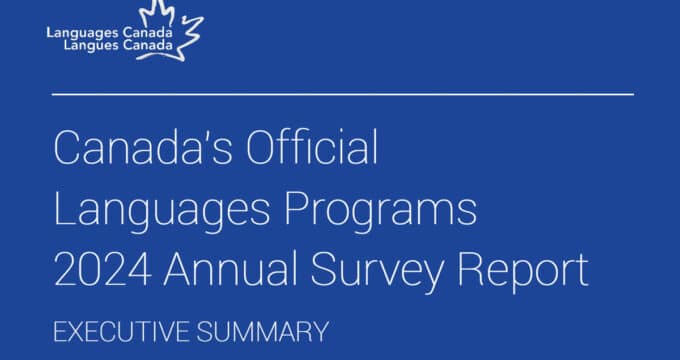88 ways to recruit international students
As colleges and universities look to increase their international student enrolment and differentiate amongst global student audiences, focusing on value-added recruitment and orientation solutions that bring marketing to international students within arms’ reach is an ongoing challenge. As you review your current recruitment strategies, you may be wondering, "Are we doing enough? Have we missed something?" Well, rather than give you a checklist of 10 or 20 techniques to consider, we found a whopping 88! The new e-book compendium 88 Ways to Recruit International Students is one of a lineup of research-based, specialised digital content published by International Education Advantage (Intead). Intead is a full-service consulting, strategy and digital international education solutions marketing company. “Global recruiting efforts can be complicated. This e-book outlines some general guidelines for strong international student recruitment," says Michael Waxman-Lenz, Intead Co-Founder and CEO. In addition, readers are encouraged to review some of the techniques and service providers mentioned in the e-book, so it also serves as an interactive, feedback-based working guide. “Cultural differences and changing barriers to technology can keep outreach efforts from reaching your target audience," says Lisa Cynamon Mayers, Academic Advisor for Intead. “As we enter new international markets, we learn what works best, which ultimately allows more international students to land in the academic programmes that best meet their needs, [which] is the most important goal."
Techniques for recruiting international students
The guide is geared towards US universities, but many of the tips and techniques translate well for all types of institutions based in any country. The e-book explores topics such as:
- Social media marketing for international student recruitment
- Google Analytics for student recruitment in China among other areas
- Strategies for institutions entering into international markets or cultivating a presence in additional regions
- Cultural and educational factors affecting marketing in international regions
- Different types of multi-language, culturally relevant marketing tools
- Messages universities should use to attract international students
- Acquiring and addressing global prospect lists
- Converting international students into brand ambassadors
- Relationship building with regional international high schools and US based immigrant communities
- US government support for global student outreach
On the subject of branding, the authors point out that “Due to size and fragmentation, brand marketing in international markets is even more difficult than in the US market. And even in the US, the majority of universities focus on a limited geographic radius. Nevertheless, the Internet and social media make it feasible and critically important to include consistent brand building efforts in your marketing.
"You can’t afford to let US News and World Report determine your international brand perception. Your material – well conceptualised and crafted and disseminated – should shape the perception and position of your institution."
The e-book further reminds readers of the importance of website accessibility – both in terms of devices (i.e., phones, tablets), language (i.e., translated by a native speaker) and geography (i.e., YouTube videos cannot be seen in China). Speaking of websites, online portals like College Prowler and College Confidential are popular among US students as platforms for sharing candid thoughts about their own colleges or ones they have visited. In China, students turn to Chasedream.com, while VietAbroader is geared towards helping Vietnamese students find study abroad opportunities. Institutions can consider advertising on such sites, or at the very least, monitoring their brand presence. Another website to take advantage of is Wikipedia, whose pages have broad reach and high credibility with search engines. Creating Wikipedia pages in local languages is relatively inexpensive and easy to maintain since you can limit it to an annual review or update. Intead also reminds us that print isn’t dead. By advertising in local periodicals, in the local language, educational providers may be able to reach a wider audience than email or online ads allow. Using local print media doesn't require a budget: “Depending on the country, you may consider a public relations campaign that highlights your academic research, alumni in key government or corporate positions, or outstanding business success stories." Webinars for parents and prospective students with faculty, current, or former students in multiple languages are also a tactic which seem under-utilised at present, but which can foster direct communication (through a Question-and-Answer session at the end) and make one institution stand out from others. Creating a focus group of current international students can help you increase recognition of your institution abroad and enhance your understanding of future marketing and recruiting efforts. Roundtable discussions are also valuable for understanding how foreign students first learned about your school, whether they worked with a counsellor or agent, and what would have helped them to better navigate the process. Current students are just one of the many resources you can tap into; former students can also help with recruitment efforts in three primary ways: direct recruitment activity, identifying new business targets, and assisting domestic/foreign students with internships. For example, alumni could host a reception for parents of local high school students when a university representative is in town. Or, alumni may arrange for a university representative to host an information session through the human resources department of their company, in order to pave the way for future internships for international students. Another approach for gaining visibility is through summer camps and classes that bring international students to your campus, whether it's for academic purposes, English language training, building leaderships skills, or good old fashioned fun. Meeting with education representatives at international embassies and developing a personal relationship with visa officers and key government contacts can also help to boost your institution’s brand recognition and marketing potential. For more detailed information and tips from Intead, download the free e-book compendium 88 Ways to Recruit International Students.


















